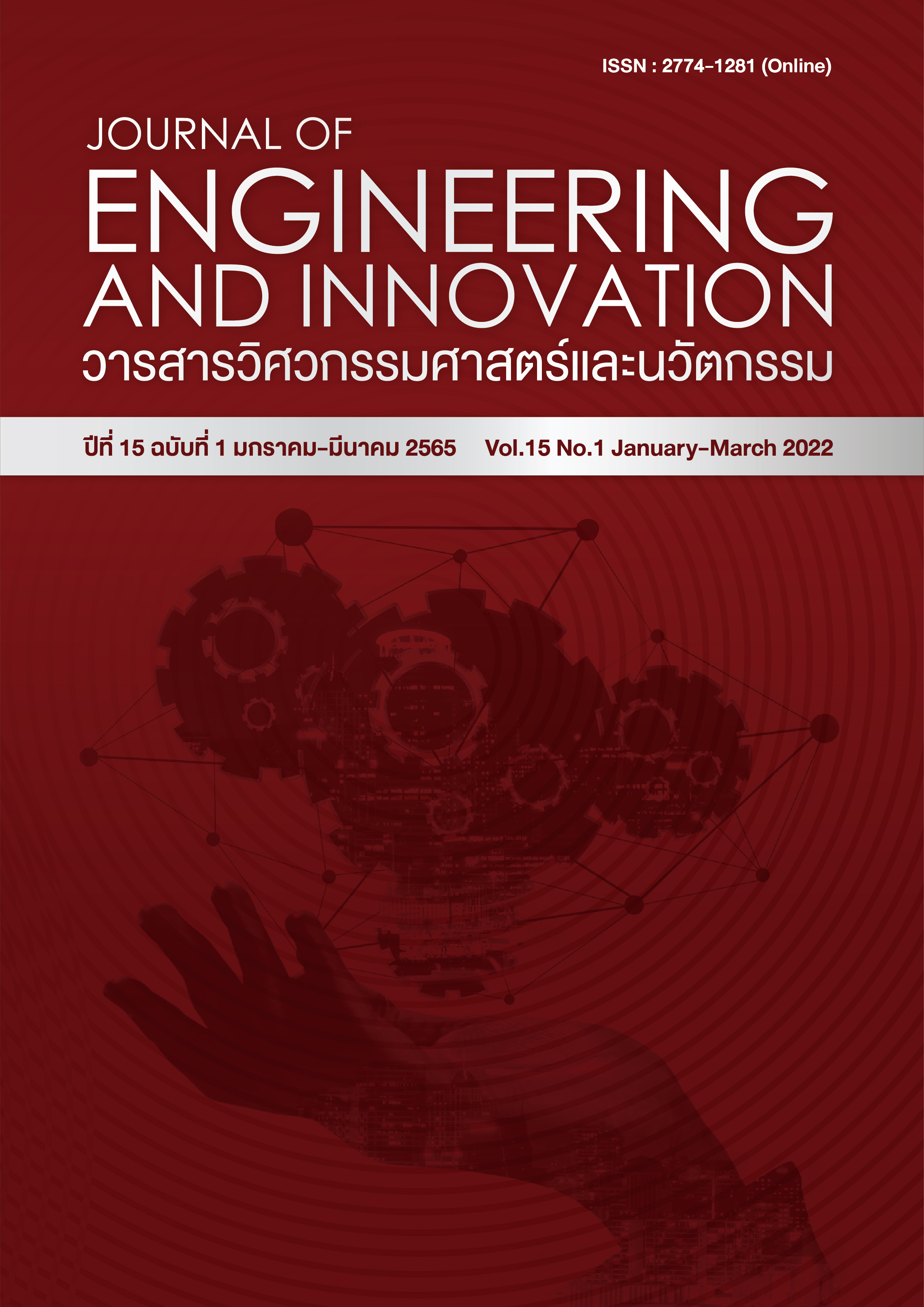Texturing of micro-lubricant pores on high-speed steel surface by fiber laser
Main Article Content
Abstract
The objective of this research is to study the fabrication of micro-lubricant pores on high-speed steel by using a laser texturing process. Effects of laser power and focal position on size of micro-lubricant pores were investigated. Specimens were made of JIS SKH51 high-speed steel with a hardness of 63 ± 2 HRC and polished smooth surface. This steel grade is one of the materials utilized for making tools and die. A laser surface texturing process with fiber laser source using an optical fiber as the active gain medium was employed. Studying influence of laser power demonstrated the diameter of micro-lubricant pores and the heat-affected zone diameter increased when the laser power increased, the laser power of 18 watts gave larger diameter of 41 µm. For the focal position, the heat-affected zone diameter became larger with raising the focal position. Elevating the focal position far from the surface resulted in larger diameter of micro-lubricant pores. At the focal position of 1 mm. and laser power of 18 watts exhibited the largest diameter of micro-lubricant pores, 67 µm. The laser texturing process can be utilized for the fabrication of the micro-lubricant pores with a diameter between 30 to 67 µm. and this process is able to texture array of dimples over the area of flat surface.
Article Details
References
Bay N, Azushima A, Groche P, Ishibashi I, Merklein M, Morishita M, Nakamura T, Schmid S, Yoshida M. Environmentally benign tribo-systems for metal forming. CIRP Annals - Manufacturing Technology. 2010;59(2): 760–780.
Mizuno T, Okamoto M. Effects of lubricant viscosity at pressure and sliding velocity on lubricating conditions in the compression-friction test on sheet metals. Transactions of the ASME Journal of the Lubrication Technology. 1982;104(1): 53–59.
Geiger M, Popp U, Engel U. Excimer laser micro texturing of cold forging tool surfaces - influence on tool life. CIRP Annals - Manufacturing Technology. 2002;51(1): 231-234.
Wakuda M, Yamauchi Y, Kanzaki S, Yasuda Y. Effect of surface texturing on friction reduction between ceramic and steel materials under lubricated sliding contact. Wear. 2003;254(3-4): 356-363.
Popp U, Engel U. Microtexturing of cold-forging tools-influence on tool life. Proceed IMechE Part B Journal of the Engineering Manufacture. 2006;220: 27-33.
Wagner K, Völkl R, Engel U. Tool life enhancement in cold forging by locally optimized surfaces. Journal of Materials Processing Technology. 2008;201(1-3): 2-8.
Meng F, Zhou R, Davis T, Cao J, Wang QJ, Hua D, Liu J. Study on effect of dimples on friction of parallel surfaces under different sliding conditions. Applied Surface Science. 2010;256, (9): 2863-2875.
Aramaki M, Yamada N, Furukimi O. Effect of combined shot treatment and nitriding on galling property of die used for high strength steels. Journal of the Iron and Steel Institute of Japan International. 2011;51(7): 1137-1141.
Furukimi O, Aramaki M, Abe K, Fukaura H, Yamada N. Improvement of die life with surface texture control and solid lubricant. Heat Treatment and Materials Journal of Heat Treatment and Materials. 2012; 67(2): 153-157.
Podgornik B, Jerina J. Surface topography effect on galling resistance of coated and uncoated tool steel. Surface and Coatings Technology. 2012;206(11-12): 2792-2800.
Abe Y, Mori K, Hatashita F, Shiba T, Daodon W, Osakada K. Improvement of seizure resistance in ironing of stainless steel cup with cermet die having fine lubricant pockets. Journal of Materials Processing Technology. 2016;234: 195-207.
JIS Handbook “Non-Ferrous Metals & Metallurgy” Japanese Standards Association. 2013. p. 1057.
MatWeb, LLC. JIS SKH51 Molybdenum High Speed Tool Steel. Available from: http://www.matweb.com/search/DataSheet.aspx?MatGUID=46b45817a9a442f8bf650836955feeb9 [Accessed 29th October 2020].
Sun S, Brandt M. Laser beam machining. In: Davim JP. (ed.) Nontraditional Machining Processes. London: Springer; 2013. p. 35–96.
Thawari G, Sarin Sundar JK, Sundararajan G, Joshi SV. Influence of process parameters during pulsed Nd:YAG laser cutting of nickel-base superalloys. Journal of Materials Processing Technology. 2005;170(1-2): 229-239.
Pfeifer R, Herzog D, Hustedt M, Barcikowski S. Pulsed Nd:YAG laser cutting of NiTi shape memory alloys-Influence of process parameters. Journal of Materials Processing Technology. 2010;210(14): 1918-1925.
Vilhena LM, Podgornik B, Vižintin J, Možina J. Influence of texturing parameters and contact conditionson tribological behaviour of laser textured surfaces. Meccanica. 2011;46(3): 567–575.
Vilhena LM, Sedlaček M, Podgornik B, Vižintin J, Babnik A, Možina J. Surface texturing by pulsed Nd:YAG laser. Tribology International. 2009;42 (10): 1496-1504.
Shimizu T, Kobayashi H, Vorholt J, Yang M. Lubrication analysis of micro-dimple textured die surface by direct observation of contact interface in sheet metal forming. Metals (MDPI). 2019;9(9): 917.

